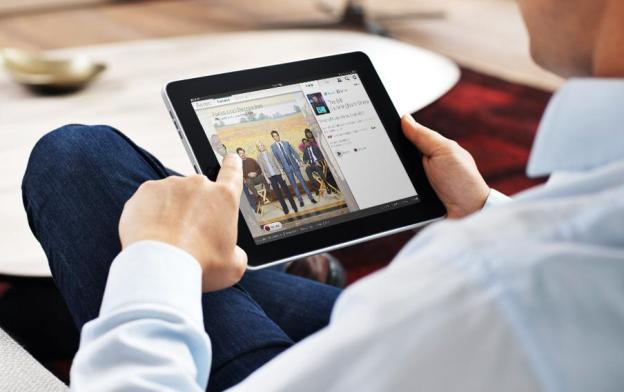
In case you haven’t been following the uproar over the little-known startup Aereo lately, allow me to summarize: A bunch of brilliant nerds are legally making money distributing content they don’t own on the Internet, it’s perfectly legal, and TV networks are pissed.
Aereo first ruffled antennas back in 2012 when it began recording live over-the-air television — the stuff you pick up with any TV for free — and charging consumers a monthly fee to stream that content online. Because the Supreme Court established all the way back in 1983 that “time-shifting” television for your own use is perfectly legal and affirmed that streaming that time-shifted content is legal in 2008, networks don’t have much legal ground to stand on. You’re basically paying Aereo to lease an antenna and DVR with your name on it, not for the content you actually stream.

Here’s the beauty: Whether you see Aereo as an opportunistic leech or a forward-thinking engine of innovation, the disruption the NYC-based startup causes as it crashes through the gridlock of status quo like a nuclear icebreaker is going to benefit consumers. This is the slap in the face sleepy-eyed TV networks needed to finally wake up, set down their greasy turkey drumsticks, and get online.
For the last decade, television networks have clung to their over-the-air broadcasts with a frenzied grip, only throwing scraps of content online as a concession to the hoards of consumers demanding more flexibility over the content they watch. Sure, we’ll let you watch a few clips of last week’s American Idol online, but you’ll need to find yourself a TV on Wednesday if you want the whole thing. And you want to watch live events like the grammy online? Pfff. No.
Online viewers have always been treated as second-class citizens to the type of people who might either watch over-the-air or pay for cable. But in many cases, they’re the same people, just trying to watch shows at a more convenient time, or on a more convenient device like an iPad or laptop.
Why snub Internet viewers? Advertisers still pay the bills in TV, and prime-time TV advertising still costs more than equivalent time on a site like Hulu. By allowing more people to watch shows online, networks risked siphoning off viewers from their more lucrative TV broadcasts.
Networks want you to think they’re reaching for a knife to pull a 127 Hours stunt, but we know better.
The compromise could come from offering additional programming on cooperative sites like Hulu (which Newscorp, ABC and NBC all own a stake in) or even increasing the amount of video streamed from the sites of local affiliates. Any of these routes would allow the networks to continue tracking how many people watch their shows, and prevent them from snipping out ads by fast forwarding.
Of course, there is the nuclear option. Both Fox and CBS have now threatened to shut down their free broadcasts entirely to freeze our Aereo, but that threat is almost certainly empty. Their balls are in a vice. They want you to think they’re reaching for a knife to pull a 127 Hours stunt, but we know better.
Only 10 percent of TV viewers still rely on over-the-air signals to watch TV, but dumping them into static to prevent a couple thousand Aereo viewers from watching online would almost certainly be cutting off your … nose to spite the face. Do you really think CBS’ sales guys want to go back to potential advertisers and explain that instead of giving them more eyeballs online through streaming viewers, they just voluntarily scythed viewership down by 10 percent?
So put down those bunny ears and foil. Broadcast TV is coming to the Web whether the companies that produce it want it there or not. And it’s about time.


